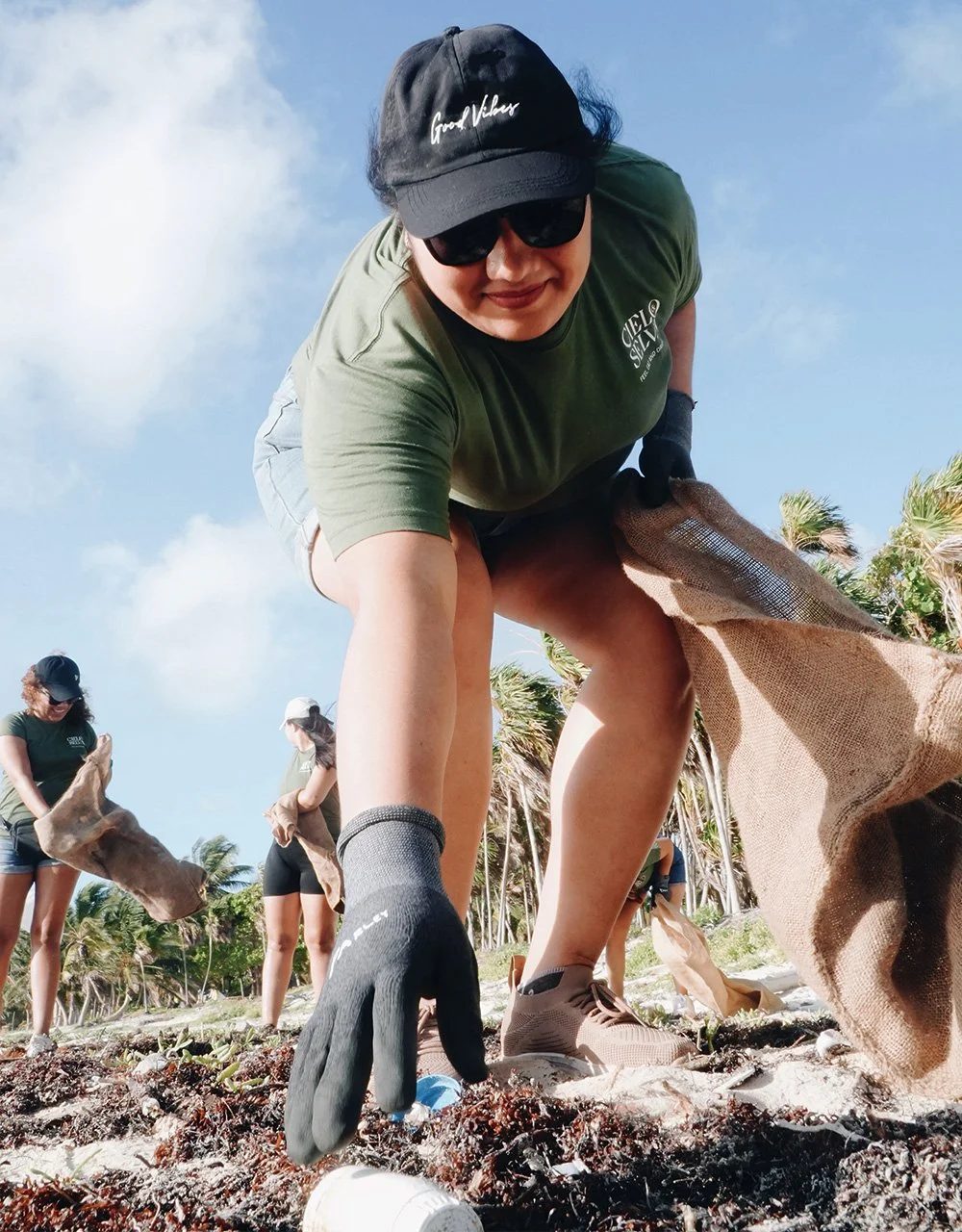FIELD NOTES – SIAN KA’AN
In this special edition of Field Notes, we travel into the sian Ka’an biosphere reserve to join a unique community cleanup and education event with Parley MÉxico
Translated from Mayan as the place “where the sky was born”, Sian Ka’an is a vast UNESCO World Heritage Site on the southeast coast of México’s Yucatán Peninsula. Protecting over half a million hectares of tropical forests, shallow lagoons, intricate mangroves, palm savannah and coral reefs, it’s both a Biosphere Reserve and Ramsar-designated Wetland of International Importance, which notes the region’s unique “petenes” – emerging islands of forests protected from surrounding salt water. On land, Sian Ka’an is home to endangered animals like the jaguar, ocelot, spider monkey and tapir, while the complex coastline and barrier reef provide habitat for dolphins, manatees, whale sharks, sea turtles and myriad species of fish and invertebrates.
As Parley México’s Alejandra Téllez explains, “México is one of the 12 most biodiverse countries in the world. With over 1,500 protected species, the Yucatán Peninsula is home to a diversity of endemic and endangered species and also home to the ancestral Mayan Culture. The Sian Ka’an Biosphere Reserve is a great example of conservation efforts that have been proven to work.”
To get there, our truck loaded with Parley cleanup gear winds its way down an unpaved and heavily-cratered dirt road, which occasionally turns into a gleaming, slippery sand track. We pass a few sun-faded hotels and fenced-off ranches after leaving Tulum and entering the park, but it still feels far more wild and undeveloped than the coastline further north. As we bump, rock and sway side-to-side making our way slowly south, Parley México’s Ximena Arvizu tells me the team has been organizing cleanups here because of the area’s biodiversity, local communities and susceptibility to drifting plastic pollution.
“We've been doing a yearly camping and cleanup here for the past few years,” she says, “and have developed a strong connection to the local community, who always turn out to take part. The volunteers love it too, and together we've been removing around 600 kg to 1 ton of marine debris each and every time.”
The weekend starts with talks by our partner EcoCaribe, hosts Cielo y Selva and community leaders Victor Barrera and Gerardo Vázquez of the Vigía Chico Cooperative in Punta Allen. Starting in the late 80s, local fishers began pioneering sustainable ways of catching spiny lobster (Panulirus argus) in the shallow seas, including freediving, using hand-snares and carefully selecting their catch to exclude small lobsters, extra large ones and females bearing eggs – resulting in a population so healthy it now helps the wider species by spreading larvae to other regions in the Caribbean, populating areas that have been overfished and seeding new life.
The next morning, not long after sunrise, we spread out along the beach, finding plastic along the tideline, on the beach itself and tangled in the vegetation beyond. It’s tough work, with temperatures already rising and vast mounds of sargassum seaweed blocking the way, buzzing with flies and sand fleas. Working together, Parley and EcoCaribe volunteers, hotel visitors and members of the community manage to collect 650 kg in just an hour. There’s a lot of fishing rope, half a surfboard, some plastic deck furniture and lots and lots of plastic bottle caps. Kids and parents bring more unusual finds to the team to record – pointing out single-use plastic items from Haiti, Barbados, Guatemala and even China (possibly from a fishing vessel) that demonstrate the interconnected nature of the plastic waste problem facing Sian Ka’an and other coastlines in the Caribbean.
As our local team selflessly volunteer for the daunting task of loading three giant Parley silo bags onto the truck by hand, I’m freed up to join the other teams for a guided tour of the surrounding mangroves, reefs and lagoons that make Sian Ka’an so worth protecting. Excursions like this give local guides an income stream beyond fishing, one that relies on a healthy and biodiverse ecosystem to draw visitors so far off the beaten track. Almost right away, the richness of the Biosphere Reserve becomes obvious as, within minutes, we spot a manatee in the clear, turquoise water – followed by two pods of converging dolphins, a nurse shark, a huge sea turtle our guide estimates to be 80 years old and petene islands inhabited by spoonbills, frigate birds and ospreys.
“We hope to see more successful examples of sustainable management across the region,” concludes Alejandra. “We are facing a huge challenge in trying to couple the expansive economic growth and development that has been going on here in the past 30 years with the conservation of the very reason that draws visitors to this place: it’s incredible biocultural heritage. There is a lot of work to do, from the bottom-up, to figure out policy, business models, systems, technologies and ways of thinking that will enable us to transition into a true sustainable region. At Parley México, we're happy to be able to actively contribute to this cause.”
Text: Chris Hatherill
Photos: Evan Ortega / Karl Moore






















